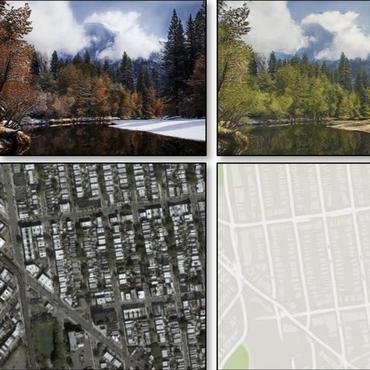Unsupervised Video-to-Video Translation
Unsupervised image-to-image translation is a recently proposed task of translating an image to a different style or domain given only unpaired image examples at training time. In this paper, we formulate a new task of unsupervised video-to-video translation, which poses its own unique challenges. Translating video implies learning not only the appearance of objects and scenes but also realistic motion and transitions between consecutive frames.We investigate the performance of per-frame video-to-video translation using existing image-to-image translation networks, and propose a spatio-temporal 3D translator as an alternative solution to this problem. We evaluate our 3D method on multiple synthetic datasets, such as moving colorized digits, as well as the realistic segmentation-to-video GTA dataset and a new CT-to-MRI volumetric images translation dataset. Our results show that frame-wise translation produces realistic results on a single frame level but underperforms significantly on the scale of the whole video compared to our three-dimensional translation approach, which is better able to learn the complex structure of video and motion and continuity of object appearance.
PDF Abstract ICLR 2019 PDF ICLR 2019 Abstract



 Moving MNIST
Moving MNIST